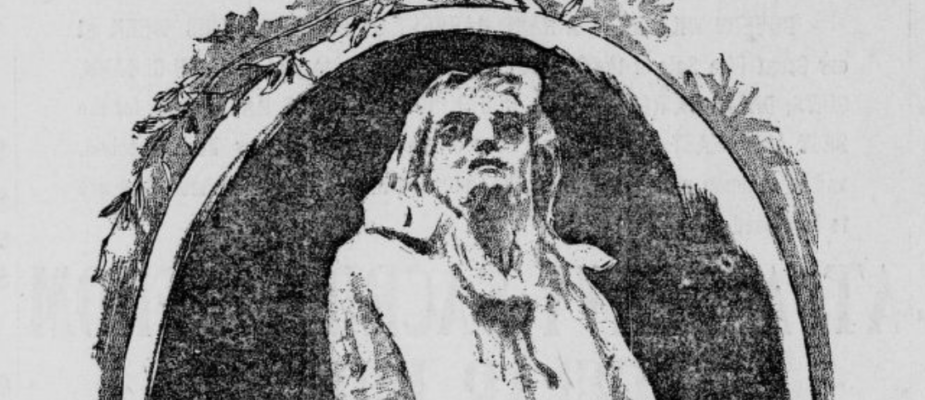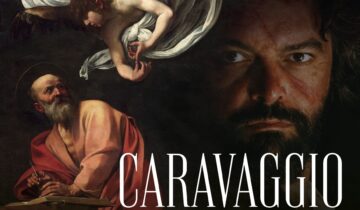By Amber Thompson, Marketing and Communications Coordinator
“The artist has just finished the model of the Balzac monument, and is busily at work on a statue of Victor Hugo… Hugo proved that there are no noble words, or rather that all words are ennobled by the purpose for which they are used, and Rodin has demonstrated that a sculptor has greater privilege than what is found in the five or six conventional attitudes.” —San Francisco Morning Call, February 21, 1892.1
Our understanding of both the works in True Nature and the life of Auguste Rodin take on new meaning when looked at through the lens of a primary source, in this case, the American newspaper. The above quote from a Paris correspondent is an early print mention of Rodin in America. As the United States began to show interest in the sculptor, newspapers were quick to highlight his biggest commissions and controversies, sometimes with headlines like “His Strange Statue of Balzac Has Divided the Art World—Some Declare It Is a Masterpiece, Others Call It a Gargoyle.”2
Rodin’s celebrity was captured by the American press in full-page features and in short briefs, on front pages and in arts and society sections.
Sometimes functioning in the capacity of tabloid, newspapers took great interest in Rodin’s personal life, including what he ate for breakfast (“the usual French coffee and roll”3), what he wore (“workaday clothes of dark blue with a fair amount of wrinkles,”4 though he was also described as “carefully dressed”5), and even private conversations that took place over dinner. A 1902 brief describes a London dinner at which both Rodin and American painter John Singer Sargent (who had painted Rodin’s portrait in 1884) were present. Of Sargent’s The Misses Hunter, Rodin is said to have given the praise, “Sargent has never done anything better. It is the work of a master.”6
Another point of interest, of course, was his relationship with long-time partner Rose Beuret. In one feature, a visitor to his home and studio suggested both that “the very best of understandings exist[ed] between the artist and his wife”7 and that he treated her as little more than a servant. “…It has doubtless never occurred to him,” the article reads, “that his wife at one time might have been a real human being.”8
This fascination continued into the last year of Rodin’s life. In January of 1917 it was reported that he was ill with “lagrippe9,” or the flu. The following day, papers corrected themselves, stating that he was not ill but had in fact married Beuret. One paper even headlined their bulletin “Rodin Fooled Them.” “Instead of being ill,” it went on, “aged sculptor was married yesterday.”10
Some articles have a direct connection to works in True Nature and show the press’s readiness to question Rodin’s behavior and well-being. The Earth, for example, which can be seen in the first gallery, depicts the Earth as a woman laying on her stomach and looking downward. In 1914, Rodin was sued for damages by an art dealer attempting to sell The Earth, which Rodin had forgotten he’d created and assumed was a forgery. Rodin informed the police, and a warrant was issued for the work’s seizure. Though the dealer traced the work back to its original buyer, proving that it was not a forgery, the dealer suggested his credit had suffered, hence the suit against Rodin.11
Another connection to OKCMOA’s current exhibition is that Rodin frequently changed the names of his works, as detailed in the label for Eternal Spring, also in True Nature’s first gallery. That work was also known as Zephyr and Earth or Cupid and Psyche. An article titled “World’s Greatest Sculptor Is Going Crazy” in 1906 questioned Rodin’s sanity because he had “taken to changing the names of some of his great works.” “He has fallen out with many of his oldest friends,” the article continued, “because they were not up with the times in regard to new names and meanings attached to old works.”12
Whether it enhances our understanding of objects on view in True Nature or Rodin’s humanity and failings, these print examples provide a wealth of insight into Rodin’s life and artistry and time, showing also how caught up the public can become in the lives of those it finds so fascinating. The American newspaper serves, too, as documentation of the very idea of True Nature, despite the many critics of his day. As one newspaper paraphrased artists viewing the plaster Balzac at the Exposition des Beaux Arts: “Let photography depict a man as he appears to be…It is our business to represent his character, his genius, his soul.”
1 Salvador, Althea. “Auguste Rodin the Sculptor.” The Morning Call. February 21, 1892. https://chroniclingamerica.loc.gov/lccn/sn94052989/1892-02-21/ed-1/seq-13/#date1=1890&sort=date&rows=20&words=Auguste+AUGUSTE+Rodin+RODIN&searchType=basic&sequence=0&index=2&state=&date2=1900&proxtext=%22auguste+rodin%22&y=11&x=13&dateFilterType=yearRange&page=1 (accessed September 29, 2023).
2 Green, Genevieve. “Paris Agitated Over Rodin’s Latest.” The San Francisco Call. July 17, 1898. https://chroniclingamerica.loc.gov/lccn/sn85066387/1898-07-17/ed-1/seq-26/#date1=1880&index=6&rows=20&words=Balzac+RODIN+Rodin&searchType=basic&sequence=0&state=&date2=1930&proxtext=rodin+balzac&y=14&x=14&dateFilterType=yearRange&page=1 (accessed September 29, 2023).
3 Brown, Curtis. “Curious Home Life of a Famous Sculptor.” The Evening Star. January 21, 1906. https://chroniclingamerica.loc.gov/lccn/sn83045462/1906-01-21/ed-1/seq-17/#date1=1906&sort=date&date2=1910&searchType=advanced&language=eng&sequence=0&index=3&words=Auguste+Rodin&proxdistance=5&state=&rows=20&ortext=&proxtext=auguste+rodin&phrasetext=&andtext=&dateFilterType=yearRange&page=1 (accessed September 29, 2023).
4 “Rodin Talks of His Work.” The Omaha Daily Bee. September 26, 1909. https://chroniclingamerica.loc.gov/lccn/sn99021999/1909-09-26/ed-1/seq-6/#date1=1906&sort=date&date2=1910&searchType=advanced&language=eng&sequence=0&index=7&words=Augusts+Rodin&proxdistance=5&state=&rows=20&ortext=&proxtext=auguste+rodin&phrasetext=&andtext=&dateFilterType=yearRange&page=8 (accessed September 29, 2023).
5 Prandes, George. “Auguste Rodin.” The Richmond Virginian. February 16, 1913. https://chroniclingamerica.loc.gov/lccn/sn90052005/1913-02-16/ed-1/seq-23/#date1=1913&sort=date&date2=1913&searchType=advanced&language=eng&sequence=0&index=4&words=Auguste+AUGUSTE+Rodin+RODIN&proxdistance=5&state=&rows=20&ortext=&proxtext=auguste+rodin&phrasetext=&andtext=&dateFilterType=yearRange&page=1 (accessed September 29, 2023).
6 “A Compliment for Sargent.” The Topeka State Journal. May 16, 1902. https://chroniclingamerica.loc.gov/lccn/sn82016014/1902-05-16/ed-1/seq-7/#date1=1900&sort=date&date2=1905&searchType=advanced&language=eng&sequence=0&index=12&words=Auguste+Rodin&proxdistance=5&state=&rows=20&ortext=&proxtext=%22auguste+rodin%22&phrasetext=&andtext=&dateFilterType=yearRange&page=1 (accessed September 29, 2023).
7 Rodin and Beuret were not officially married until 1917.
8 Brown, Curtis. “Curious Home Life of a Famous Sculptor.” The Evening Star. January 21, 1906. https://chroniclingamerica.loc.gov/lccn/sn83045462/1906-01-21/ed-1/seq-17/#date1=1906&sort=date&date2=1910&searchType=advanced&language=eng&sequence=0&index=3&words=Auguste+Rodin&proxdistance=5&state=&rows=20&ortext=&proxtext=auguste+rodin&phrasetext=&andtext=&dateFilterType=yearRange&page=1 (accessed September 29, 2023).
9 “Famous Sculptor Ill of Lagrippe.” The Lakeland Evening Telegram. January 29, 1917. https://chroniclingamerica.loc.gov/lccn/sn95047222/1917-01-29/ed-1/seq-1/#date1=1917&sort=date&rows=20&words=Auguste+Rodin&searchType=basic&sequence=0&index=2&state=&date2=1917&proxtext=%22auguste+rodin%22&y=11&x=14&dateFilterType=yearRange&page=1 (accessed September 29, 2023).
10 “Rodin Fooled Them.” The Daily Ardmoreite. January 30, 1917. https://chroniclingamerica.loc.gov/lccn/sn85042303/1917-01-30/ed-1/seq-1/#date1=1840&sort=date&rows=20&words=Augusts+Rodin&searchType=basic&sequence=0&index=2&state=Oklahoma&date2=1917&proxtext=%22auguste+rodin%22&y=14&x=15&dateFilterType=yearRange&page=1 (accessed September 29, 2023).
11 “Had Forgotten His Work.” The Churchill County Standard. February 4, 1914. https://chroniclingamerica.loc.gov/lccn/sn86076306/1914-02-04/ed-1/seq-6/#date1=1914&sort=date&date2=1914&searchType=advanced&language=eng&sequence=0&index=7&words=Auguste+Rodin&proxdistance=5&state=&rows=20&ortext=&proxtext=auguste+rodin&phrasetext=&andtext=&dateFilterType=yearRange&page=1 (accessed September 29, 2023).
12 “World’s Greatest Sculptor Is Going Crazy.” The Spokane Press. July 25, 1906. https://chroniclingamerica.loc.gov/lccn/sn88085947/1906-07-25/ed-1/seq-3/#date1=1906&sort=date&date2=1910&searchType=advanced&language=eng&sequence=0&index=2&words=Auguste+Rodin&proxdistance=5&state=&rows=20&ortext=&proxtext=auguste+rodin&phrasetext=&andtext=&dateFilterType=yearRange&page=2 (accessed September 29, 2023).
13 Green, Genevieve. “Paris Agitated Over Rodin’s Latest.” The San Francisco Call. July 17, 1898. https://chroniclingamerica.loc.gov/lccn/sn85066387/1898-07-17/ed-1/seq-26/#date1=1880&index=6&rows=20&words=Balzac+RODIN+Rodin&searchType=basic&sequence=0&state=&date2=1930&proxtext=rodin+balzac&y=14&x=14&dateFilterType=yearRange&page=1 (accessed September 29, 2023).








